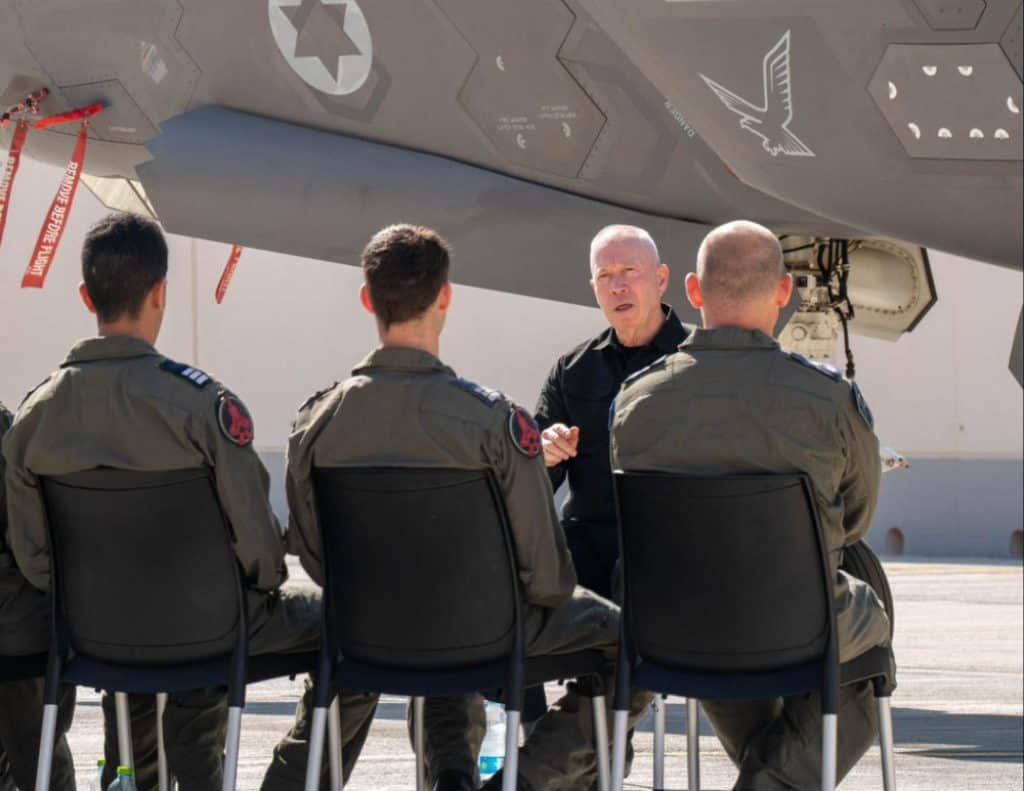
The Israel Defense Forces (IDF) targeted the head of Hamas’s armed forces in Gaza and one of its remaining brigade commanders in a series of airstrikes in south Gaza on July 13. The strikes aimed to eliminate Mohammed Dief, Hamas’s top military commander, and Khan Younis Brigade Commander Rafa’a Salameh. The IDF and Israel Security Agency, Israel’s internal security service, said on July 14 that they assessed that Salameh was killed.
The strikes took place in the Mawasi area of southern Gaza, which has been designated a humanitarian zone. Egypt and other countries condemned the attack due to the reported civilian death toll.
Israeli assessments are still being made about the fate of Deif, who has survived several Israeli strikes over the last two decades. “It is still too early to conclude the results of the strike, which Hamas is trying to hide. We are determined to continue and pursue senior Hamas officials, those who planned and carried out the October 7th Massacre and dedicated their lives to the murder of innocent civilians,” IDF Chief of Staff Lieutenant General Herzi Halevi said on July 14. Israeli Defense Minister Yoav Gallant, visiting the IDF’s Nevatim Air Base on July 13, said the “the pursuit of Hamas terrorists will continue for years to come—from the most senior ones to the terrorists in the field.”
Salemeh and Deif are among the handful of remaining top Hamas commanders in Gaza. Marwan Issa, the deputy commander of Hamas’ forces in Gaza, was killed in an airstrike in Gaza in March. Saleh al-Arouri, another key Hamas figure, was killed in Beirut in January. Deif is well known in Hamas for his uncanny ability to avoid not only past airstrikes and raids but also being caught on camera. Few public images of him exist. Nevertheless, Deif is seen as a central figure behind the planning of the October 7, 2023, attack on Israel.
Salameh is one of Hamas’s five brigade commanders in Gaza. With his death, only two of these commanders remain: the heads of the Rafah Brigade and the Gaza Brigade. Both units, which once had thousands of men, have been shattered or forced to retreat in fighting since Israel launched its ground offensive in November. The IDF entered Rafah in May, and the Hamas fighters in Rafah mostly fled to Khan Younis. Around 900 Hamas members in Rafah were eliminated in clashes with the IDF, Israel believes.
Salemeh has a long record of involvement in terrorism. He joined the group and moved up through the ranks, closely following Mohammed Sinwar, the brother of Yahya Sinwar, who currently leads Hamas in Gaza. Salemeh played a role in the kidnapping of IDF soldier Gilad Schalit in 2006. It appears that losing Salameh and possibly Deif would reduce the group’s top command to only a skeleton of its former self, forcing Hamas to fill numerous open spots in its Gazan-based terror leadership. In contrast, Hamas’s foreign-based leaders, often seen as the more political wing of the group, reside in Doha and have continued their activities relatively openly since the war began.
Halevi met with members of the elite IDF Shaldag unit at Israel’s Palmachim Air Base. He noted that the strikes on Hamas commanders are part of how the IDF generates pressure on Hamas for a hostage deal. “An agreement for the return of the hostages is an urgent moral imperative to save lives. […] The IDF will know how to abide by any agreement that will be approved by the political echelon, and even at the end of a ceasefire, to return and operate again with great strength,” he said. Halevi also noted that the IDF intelligence concluded that no hostages were present at the site of the airstrike.
In a discussion with IDF pilots and support personnel at Nevatim Air Base who participated in the July 13 strike, Gallant emphasized that “Hamas’s capabilities are eroding every day, they are paying huge prices, and their ability to rebuild is very limited.” He said the airstrikes are “ensuring that Hamas is unable to regain military and industrial capabilities.”
The airstrike on July 13 was larger and more complex than Israel’s usual precision strikes in Gaza. Since January, Israel has shifted gears in Gaza to a more low-intensity operation with fewer large airstrikes. The July 13 attack was an exception, and the extensive crater and reports of numerous strikes on the same area illustrate how the IDF sought to make sure its target was eliminated, according to various reports in Israeli media.







